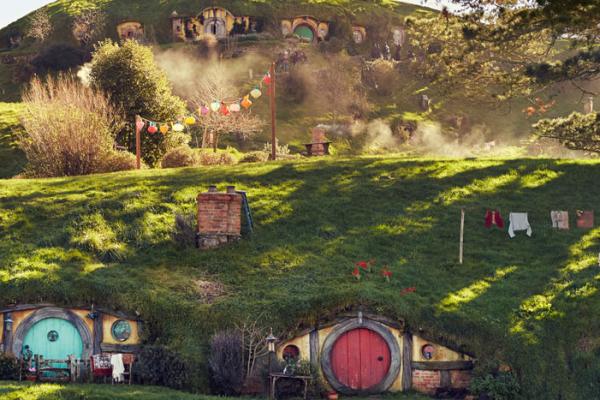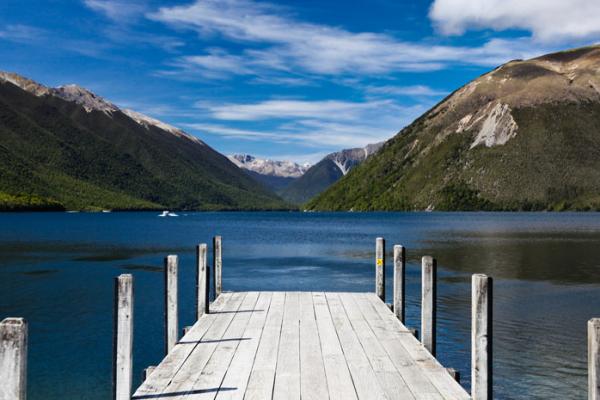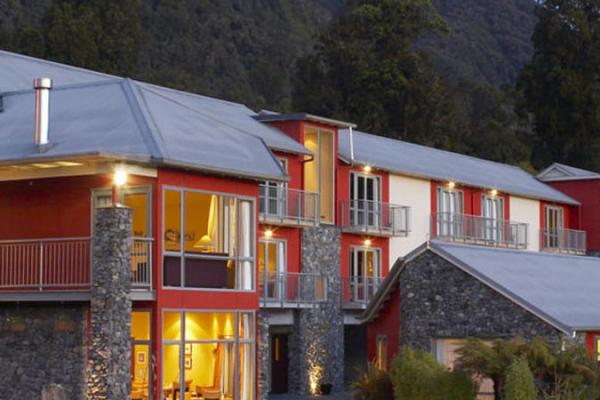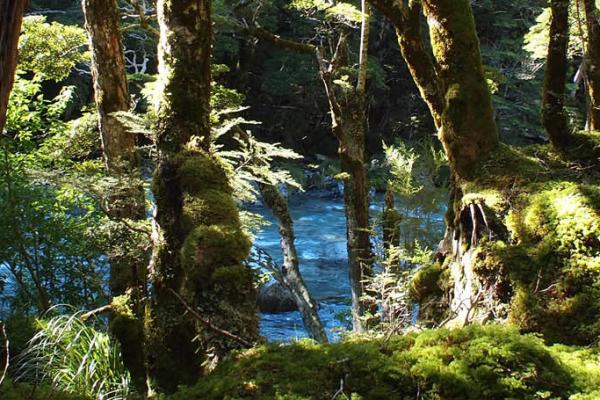9 Things You Need to Know About Hiking in New Zealand for the First Time
New Zealand’s landscapes are postcard perfect everywhere you turn. And the best way to truly experience them? Why, walk on them, climb them, and sleep with them, of course! New Zealand’s wilderness is like no other, as there are no other modes of transport available deep inside the National Parks. So you can just imagine how untouched and pure your hike will be. Never liked the outdoors or haven’t tried? New Zealand is the best place to start, and you’ll be addicted for life.
We’ve put together this list of things you need to know about hiking in New Zealand. Whether you’re about to embark on your virgin hike, or just your first time doing so in New Zealand, this list will hopefully shine some light on what to look out for before hiking here.
1. It’s called Tramping in New Zealand

A tramp may not be a good word to use on a woman in the US, but that’s what hiking means in New Zealand! As with many words you will come to learn on your New Zealand adventure, different words may mean something different here, or the kiwis may just have their own way of saying things. Hiking is what it’s called in most parts of the world. And in other parts of the world, it’s called trekking in Nepal, while in Australia, it’s called bushwalking.
2. Different Types of Trails and What They Mean
Day Hikes
Day hikes are doable in a day, though not all are easy. A stunning yet casual stroll day hike would be the Hooker Valley Track (3 hours return) at Mount Cook Village, where you get incredible views of the remarkable Mount Cook. If you’re up for more of a challenge, the Tongariro Alpine Crossing (8 hours) is part of the Tongariro Northern Circuit, which is one of New Zealand’s Great Walks and features the filming location of Lord of the Rings (more Lord of the Rings tips here)! This walk promises magnificent views of lava flows and emerald-coloured lakes.
New Zealand Great Walks
Great Walks are multi-day trails that are very well maintained, and boast some of the best scenery New Zealand has to offer. There are currently nine Great Walks in New Zealand. As these walks are very popular, bookings for accommodation are sold out well in advance, so be sure to book early on the Department of Conservation website.
Multi-day Hikes
There are other multi-day hikes that are not part of the New Zealand Great Walks but offer cheaper accommodation. They take you through some amazing landscapes as well. These hikes usually have clear paths and semi-maintained huts.
Backcountry Hikes
Backcountry trails are less maintained when it comes to both the trail and the huts. These trails are off the beaten track, so there are no boardwalks built and is instead au naturel with occasional to frequent tree roots, rocks and rivers to scramble over. Tracks are marked with orange triangle markets to guide you in the right direction. Huts on such trails are free and basic, and these types of walks are only suitable for those with backcountry experience.
3. Types of Accommodation
Mueller Hut
On Great Walks, you cannot simply pitch your tent anywhere on the trail. There are designated huts and campsites. It will serve you well to plan and book your accommodation from the Department of Conservation well in advance as they can get fully booked during peak seasons. No matter which accommodation you book, do bring your own sleeping bag (there is no bedding provided even though some huts have mattresses) and cooking utensils.
Department of Conservation Huts
Great Walk Huts – Think of them as the 5-star hotel equivalent of all available accommodation for hiking in New Zealand. These huts are most well-equipped with water, heating, mattresses, washing facilities, toilets (some even standard western flush toilets), and a hut warden.
Serviced Huts – Similar to Great Walk Huts, Serviced Huts have all of the above, with the exception of heating (they may have a wood burner) and may not come with a hut warden.
Standard Huts – These have mattresses, water supply, toilet, and sometimes a wood burner.
Basic Huts – These provide you a roof over your head, sometimes with mattresses if you’re lucky. Toilets are usually a distance away from the hut and is the “long drop” (compost toilets).
Department of Conservation Campsites
Tent with a view
Serviced Campsites – These would be quite the full-service campsite. They have western flush toilets, tap water, kitchen/cooking bench, hot showers, rubbish collection and road access for all types of vehicles.
Scenic and Standard Campsites – Expect more basic facilities like toilets, water supply (tap, stream, or lake) and vehicle or boat access. BBQs, fireplaces, cold showers, picnic tables, a cooking shelter and rubbish bins may be an added extra.
Basic Campsites – These are free campsites but have very limited facilities.
Great Walk Campsites – These are designated sites located near Great Walk Huts, with toilet facilities and water supply. Please note that there are no campsites on the Milford Track.
Other Accommodation
There are several accommodation options not managed by the Department of Conservation on certain trails. For example, there are backpacker hostels and high-end lodges along the Queen Charlotte Track.
Freedom Camping
Here’s the fun part! Always wanted to just pick a random spot and camp overnight under the stars? Freedom camping is allowed in New Zealand national parks, except where expressly prohibited (there will be signs that say so). In some places, only self-contained vehicles are allowed to camp overnight. For more information on where you can or cannot camp, look here. And here's a great article aimed at freedom campers in campervans.
4. What to Pack
It can be overwhelming thinking about how to pack strategically to fit everything in a backpack — all you have for a few days. Don’t be! It’s pretty much the same as packing for any trip abroad. Questions you should ask yourself are: What’s the weather like? What if I fall ill? What if my period comes (for the ladies)? Do I have enough food for every meal?
Depending on which season you’re going tramping, as well as how high above sea level your trail goes, pack clothes that are appropriate for the temperature. If you’re climbing up a mountain, the temperature at the exposed mountain peak is going to be very different from the base of the mountain, and also very different at night when you’re going to sleep.
Here’s a reference packing list that may inspire you:
- Clothes
- Quick-dry shirts
- Camping pants
- Rain jacket & pants
- Sleepwear
- Underwear
- Socks
- Hiking boots
- Hat & sunglasses
- Warm jacket if going up the mountain for the night
- Quick-dry towel
Equipment
- Portable camping stove
- Portable camping cookware
- Camping spork
- Lighter
- Water bottle / Hydration bladder (at least 2L to have enough water for a day)
- Swiss army knife
- Headlamp
- Sleeping bag
- Sleeping mat (if you’re going to be sleeping in a tent)
- Tent (if you’re going to be staying at a campsite)
- Inflatable pillow
- Wash cloth
- A eco friendly little detergent
Food
- Enough food for the number of meals & snacks
- Plan meals that are lightweight yet high protein
- Examples: oatmeal or peanut butter sandwiches for breakfast; pepperoni and cheese sandwich for lunch; freeze-dried meals or instant noodles for dinner; apples, muesli bars, energy bars, and nuts/trail mix for snacks.
Other Things to Pack
- Hiking poles
- Toilet paper, wet wipes, hand sanitizer
- Medications
- Sunscreen
- Toothbrush & toothpaste
- First-aid kit
- Camera
- Bug spray (the South island is known for their sandflies)
5. Book Early

Tongariro Crossing
The New Zealand Great Walks get booked up very fast especially for the summer season, so grab your spot on the Department of Conservation (DoC) website early. You will be able to get insight into how much you will be able to walk each day with the estimated hours and kilometres on the DoC website, so that you know which hut/campsite to stay at for each day of your multi-day hike. Backcountry trails don’t require pre-booking, but you will need to buy a hut pass at a local DoC office before you begin your hike.
6. All Your Rubbish Should Follow You Out
Nobody will be cleaning up after you, so pack all your rubbish and food waste with you to be disposed of outside the park when you’ve completed the trail.
7. Brown Water is Still Drinkable — But Boil First!
Gertrude Saddle
Sometimes the water running from taps in the huts may be slightly brown. Don’t be alarmed by this. If the water is from the running taps in the huts, or from rain water barrels, these are safe to drink. You may want to boil it for at least three minutes first to be safe. You probably don’t want to drink from any stream or river, unless you have a sterilization pen or water purification tablets.
8. Inform People of Your Plans
Let someone (your friend / family / hostel manager) know where you’ll be going and for how many days. This helps them anticipate your return and ability to call someone for help if they don’t hear from you when you’re supposed to be out of the park. You will see huts along the way with a sign-in book, sign it with your name and intent (number of days and date that you will be leaving).
9. Plan Your Transport In and Out
Many of the Great Walks and multi-day hikes in New Zealand are one way and not a circuit/loop. This means you will end your hike in a different location from when you started. There are usually service providers that you can book beforehand that offers shuttles to and from each of the track. Alternatively, you may arrange for them to send you back to where you parked your car at the beginning of the track.
Alright, now that you’re armed with all this information, the next step is for you to actually get out there! New Zealand has a whole range of hiking trails suitable for people of varying levels of fitness. Enjoy the fresh air, flora and fauna, and you are bound to meet a few of New Zealand’s birdlife. Have fun and stay safe.
Questions about your trip? Check out our free Trip Planning Service here.
Let Us Help You Plan Your Dream New Zealand Trip
Get help creating the perfect self-drive itinerary, finding the best deal on a car or campervan rental or booking the perfect tour. We offer personalized support prior to your trip. Contact us or fill out our FREE Travel Planning Service form below.













